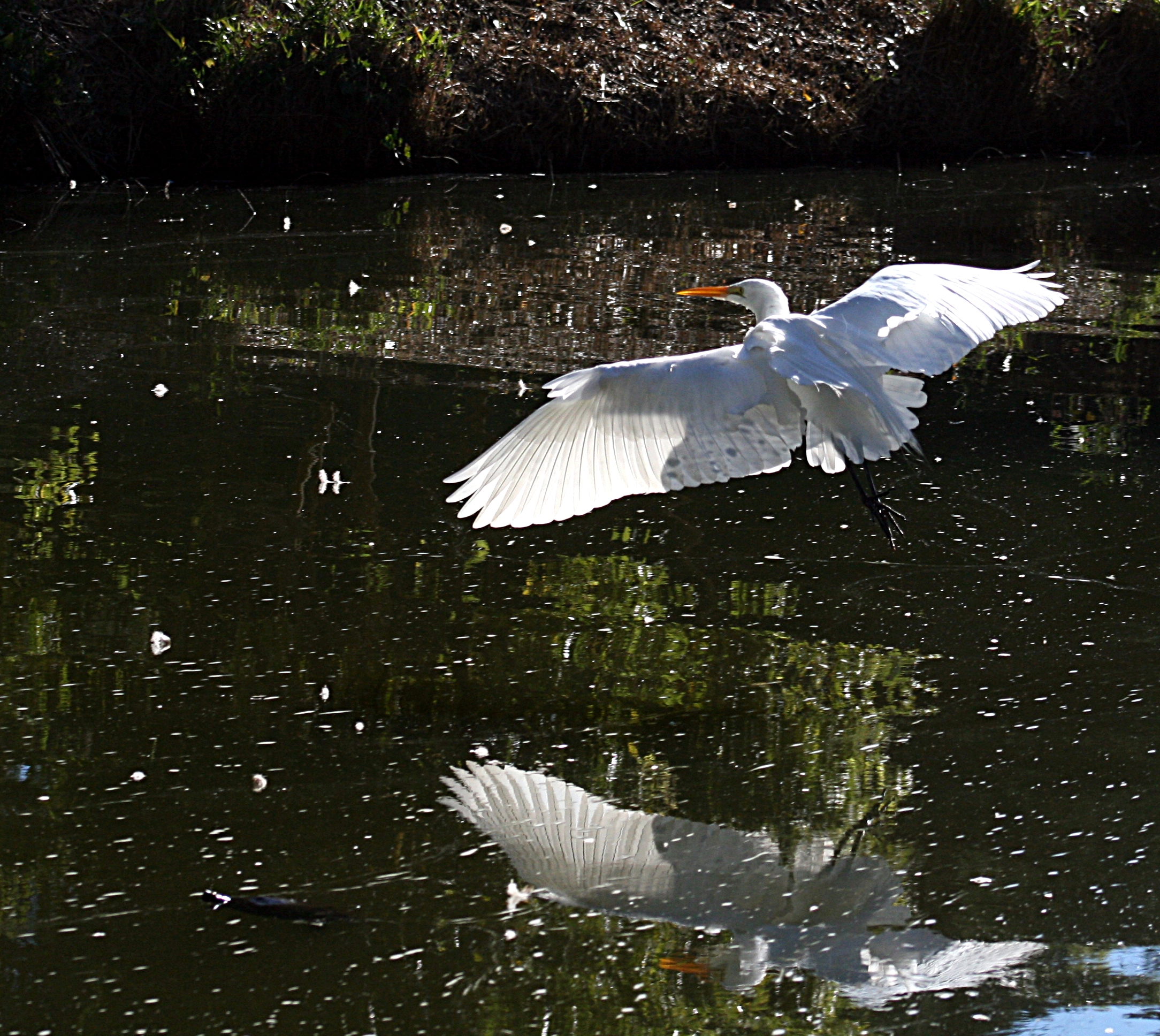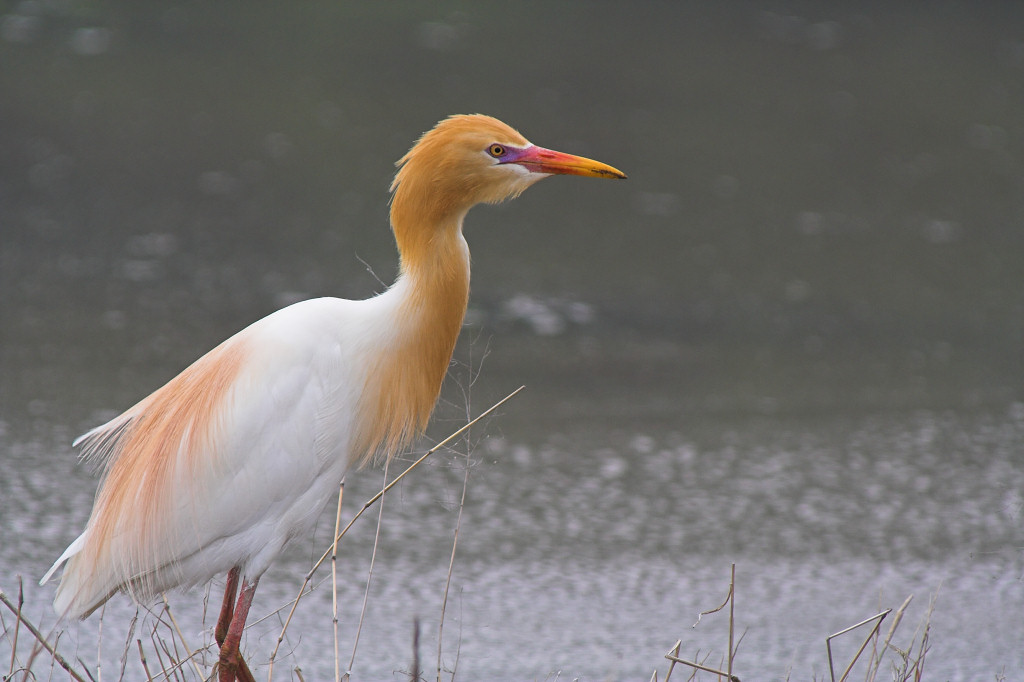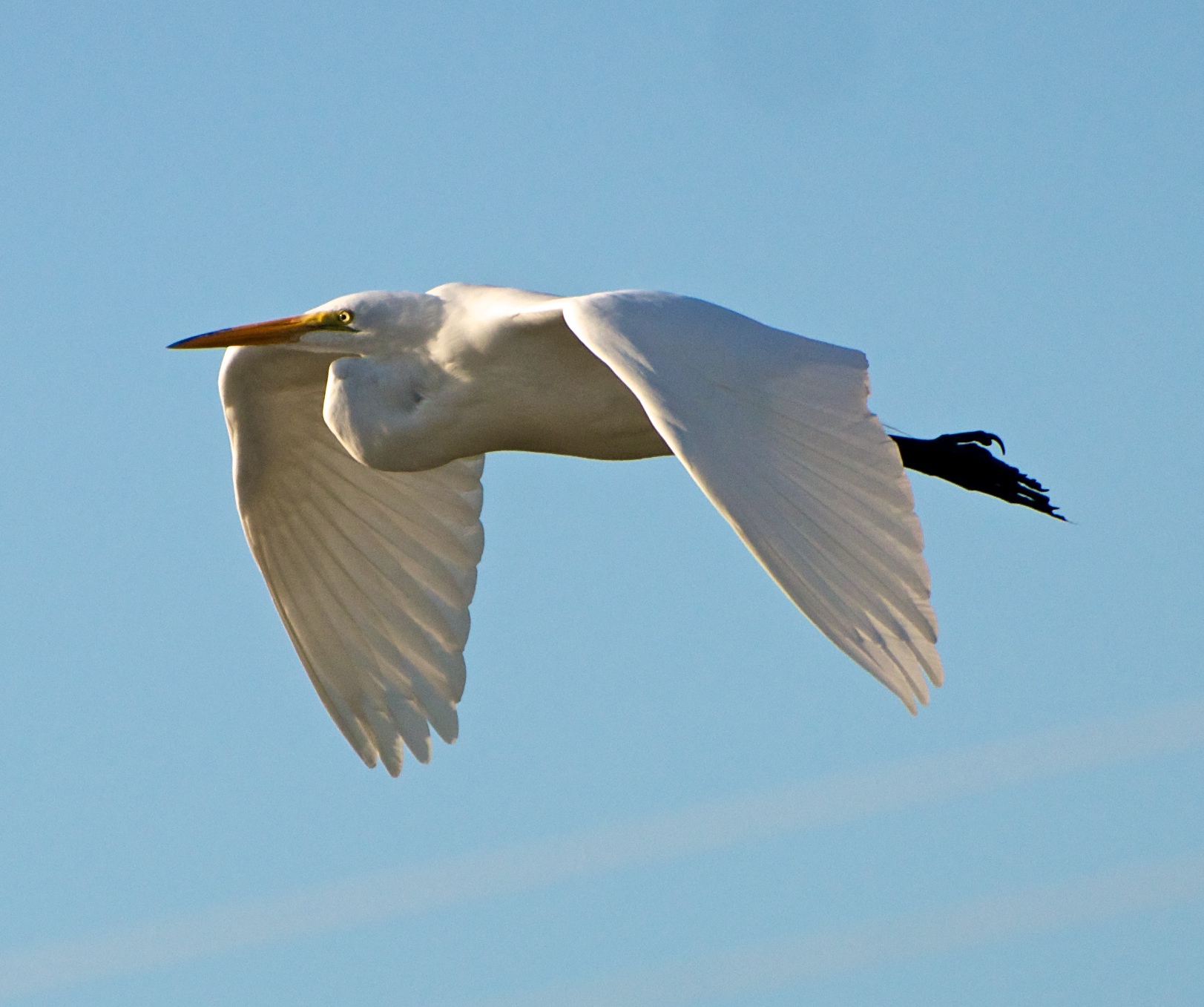|
Egrets
Egrets ( ) are herons, generally long-legged wading birds, that have white or buff plumage, developing fine plumes (usually milky white) during the breeding season. Egrets are not a biologically distinct group from herons and have the same build. Biology Many egrets are members of the genera ''Egretta'' or '' Ardea'', which also contain other species named as herons rather than egrets. The distinction between a heron and an egret is rather vague, and depends more on appearance than biology. The word "egret" comes from the French word ''aigrette'' that means both "silver heron" and "brush", referring to the long, filamentous feathers that seem to cascade down an egret's back during the breeding season (also called "egrets"). Several of the egrets have been reclassified from one genus to another in recent years; the great egret, for example, has been classified as a member of either ''Casmerodius'', ''Egretta'', or ''Ardea''. In the 19th and early part of the 20th centuries, ... [...More Info...] [...Related Items...] OR: [Wikipedia] [Google] [Baidu] |
Cattle Egret
The cattle egret (''Bubulcus ibis'') is a cosmopolitan species of heron (family Ardeidae) found in the tropics, subtropics, and warm-temperate zones. It is the only member of the monotypic genus ''Bubulcus'', although some authorities regard its two subspecies as full species, the western cattle egret and the eastern cattle egret. Despite the similarities in plumage to the egrets of the genus ''Egretta'', it is more closely related to the herons of '' Ardea''. Originally native to parts of Asia, Africa, and Europe, it has undergone a rapid expansion in its distribution and successfully colonised much of the rest of the world in the last century. It is a white bird adorned with buff plumes in the breeding season. It nests in colonies, usually near bodies of water and often with other wading birds. The nest is a platform of sticks in trees or shrubs. Cattle egrets exploit drier and open habitats more than other heron species. Their feeding habitats include seasonally inundat ... [...More Info...] [...Related Items...] OR: [Wikipedia] [Google] [Baidu] |
Great Egret
The great egret (''Ardea alba''), also known as the common egret, large egret, or (in the Old World) great white egret or great white heron is a large, widely distributed egret. The four subspecies are found in Asia, Africa, the Americas, and southern Europe. Recently it is also spreading to more northern areas of Europe. Distributed across most of the tropical and warmer temperate regions of the world, it builds tree nests in colonies close to water. Taxonomy and systematics Like all egrets, it is a member of the heron family, Ardeidae. Traditionally classified with the storks in the Ciconiiformes, the Ardeidae are closer relatives of pelicans and belong in the Pelecaniformes, instead. The great egret—unlike the typical egrets—does not belong to the genus ''Egretta'', but together with the great herons is today placed in '' Ardea''. In the past, however, it was sometimes placed in ''Egretta'' or separated in a monotypic genus ''Casmerodius''. The Old World populati ... [...More Info...] [...Related Items...] OR: [Wikipedia] [Google] [Baidu] |
Great Egret
The great egret (''Ardea alba''), also known as the common egret, large egret, or (in the Old World) great white egret or great white heron is a large, widely distributed egret. The four subspecies are found in Asia, Africa, the Americas, and southern Europe. Recently it is also spreading to more northern areas of Europe. Distributed across most of the tropical and warmer temperate regions of the world, it builds tree nests in colonies close to water. Taxonomy and systematics Like all egrets, it is a member of the heron family, Ardeidae. Traditionally classified with the storks in the Ciconiiformes, the Ardeidae are closer relatives of pelicans and belong in the Pelecaniformes, instead. The great egret—unlike the typical egrets—does not belong to the genus ''Egretta'', but together with the great herons is today placed in '' Ardea''. In the past, however, it was sometimes placed in ''Egretta'' or separated in a monotypic genus ''Casmerodius''. The Old World populati ... [...More Info...] [...Related Items...] OR: [Wikipedia] [Google] [Baidu] |
Western Reef Heron
The western reef heron (''Egretta gularis''), also called the western reef egret, is a medium-sized heron found in southern Europe, Africa and parts of Asia. It has a mainly coastal distribution and occurs in several plumage forms: a slaty-grey plumage in which it can only be confused with the rather uncommon dark morph of the Little egret (''Egretta garzetta''); a white form which can look very similar to the little egret although the bill tends to be paler and larger and the black form with white throat ''E. g. gularis'' of West Africa. There are also differences in size, structure and foraging behaviour. There have been suggestions that the species hybridizes with the Little Egret, and based on this, some authors treat ''schistacea'' and ''gularis'' as subspecies of ''Egretta garzetta''. Works that consider the Western Reef Heron as a valid species include the nominate ''gularis'' and ''schistacea'' as subspecies. Description This bird has two plumage colour forms. There is ... [...More Info...] [...Related Items...] OR: [Wikipedia] [Google] [Baidu] |
Heron
The herons are long-legged, long-necked, freshwater and coastal birds in the family Ardeidae, with 72 recognised species, some of which are referred to as egrets or bitterns rather than herons. Members of the genera ''Botaurus'' and ''Ixobrychus'' are referred to as bitterns, and, together with the zigzag heron, or zigzag bittern, in the monotypic genus ''Zebrilus'', form a monophyletic group within the Ardeidae. Egrets do not form a biologically distinct group from herons, and tend to be named differently because they are mainly white or have decorative plumes in breeding plumage. Herons, by evolutionary adaptation, have long beaks. The classification of the individual heron/egret species is fraught with difficulty, and no clear consensus exists about the correct placement of many species into either of the two major genera, '' Ardea'' and ''Egretta''. Similarly, the relationships of the genera in the family are not completely resolved. However, one species formerly considere ... [...More Info...] [...Related Items...] OR: [Wikipedia] [Google] [Baidu] |
Slaty Egret
The slaty egret (''Egretta vinaceigula'') is a small, dark egret. It is one of the species to which the ''Agreement on the Conservation of African-Eurasian Migratory Waterbirds'' (AEWA) applies. It is classified as Vulnerable species, Vulnerable, the biggest threat being habitat loss. Description Until 1971, the slaty egret and more widespread black egret ''Egretta ardesiaca'' were thought to be colour Morph (zoology), morphs of the same species but the slaty egret shows consistent features which separate it from the black egret. These are the yellow legs and the vinous brown throat of the slaty egret, which extends down right onto the belly in immature birds. The slaty egret does not display the characteristic "mantling" behaviour of the black egret. Distribution and population The slaty egret lives in south-central Africa. The largest populations are found in Zambia and Botswana. In Zambia there are maybe 500 to 1,000 individuals, mainly found at Liuwa Plain National Park ... [...More Info...] [...Related Items...] OR: [Wikipedia] [Google] [Baidu] |
Snowy Egret
The snowy egret (''Egretta thula'') is a small white heron. The genus name comes from Provençal French for the little egret, , which is a diminutive of , 'heron'. The species name ''thula'' is the Araucano term for the black-necked swan, applied to this species in error by Chilean naturalist Juan Ignacio Molina in 1782.Jobling, 2010, p.143, 385 The snowy egret is the American counterpart to the very similar Old World little egret, which has become established in the Bahamas. At one time, the plumes of the snowy egret were in great demand as decorations for women's hats. They were hunted for these plumes and this reduced the population of the species to dangerously low levels. Now protected in the United States by law, under the Migratory Bird Treaty Act, this bird's population has rebounded. Description Adult snowy egrets are entirely white apart from the yellow lores between the long black bill and the eye, black legs, and bright yellow feet. The nape and neck bear long ... [...More Info...] [...Related Items...] OR: [Wikipedia] [Google] [Baidu] |
Intermediate Egret
The intermediate egret, median egret, smaller egret, or yellow-billed egret (''Ardea intermedia'') is a medium-sized heron. Some taxonomists put the species in the genus ''Egretta'' or ''Mesophoyx''. It is a resident breeder from east Africa across the Indian subcontinent to Southeast Asia and Australia. Taxonomy Some authorities classify the intermediate egret in its own monotypic genus, ''Mesophoyx'', while others place it with the smaller egrets in ''Egretta''. There are three recognised subspecies, and these are sometimes raised in to species: * ''A. i. brachyrhyncha'' Brehm, 1854 "yellow-billed egret" - sub-Saharan Africa * ''A.i. intermedia'' Wagler, 1827 "intermediate egret" - Asia from the Russian Far East to Japan to India and the Greater Sundas * ''A. i. plumifera'' Gould, 1848 "plumed egret" - eastern Indonesia, New Guinea and Australia. ''A.i. intermedia'' differs from ''A.i. brachyrhyncha'' and ''A. i. plumifera'' by having a black bill when in breeding pluma ... [...More Info...] [...Related Items...] OR: [Wikipedia] [Google] [Baidu] |
Egrets In AP W IMG 4220
Egrets ( ) are herons, generally long-legged wading birds, that have white or buff plumage, developing fine plumes (usually milky white) during the breeding season. Egrets are not a biologically distinct group from herons and have the same build. Biology Many egrets are members of the genera ''Egretta'' or '' Ardea'', which also contain other species named as herons rather than egrets. The distinction between a heron and an egret is rather vague, and depends more on appearance than biology. The word "egret" comes from the French word ''aigrette'' that means both "silver heron" and "brush", referring to the long, filamentous feathers that seem to cascade down an egret's back during the breeding season (also called "egrets"). Several of the egrets have been reclassified from one genus to another in recent years; the great egret, for example, has been classified as a member of either ''Casmerodius'', ''Egretta'', or ''Ardea''. In the 19th and early part of the 20th centuries, s ... [...More Info...] [...Related Items...] OR: [Wikipedia] [Google] [Baidu] |
Little Blue Heron
The little blue heron (''Egretta caerulea'') is a small heron of the genus ''Egretta''. It is a small, darkly colored heron with a two-toned bill. Juveniles are entirely white, bearing resemblance to the snowy egret. During the breeding season, adults develop different coloration on the head, legs, and feet. They have a range that encompasses much of the Americas, from the United States to northern South America. Some populations are migratory. Climate change will probably cause their distribution to spread north. They can be found in both saltwater and freshwater ecosystems. Their preference for either one depends on where they live. Nesting behaviors are documented by numerous sources. The adults build nests in trees, in colonies with other bird species. The number of eggs laid varies from place to place. The young mature quickly, requiring little attention from adults after about nineteen days of age. Both young and adults are sometimes preyed on by other species. Adul ... [...More Info...] [...Related Items...] OR: [Wikipedia] [Google] [Baidu] |
Plume Hunting
Plume hunting is the hunting of wild birds to harvest their feathers, especially the more decorative plumes which were sold for use as ornamentation, such as aigrettes in millinery. The movement against the plume trade in the United Kingdom was led by Etta Lemon and other women and led to the establishment of the Royal Society for the Protection of Birds. The plume trade was at its height in the late 19th and was brought to an end in the early 20th century. By the late 19th century, plume hunters had nearly wiped out the snowy egret population of the United States. Flamingoes, roseate spoonbills, great egrets and peafowl have also been targeted by plume hunters. The Empress of Germany's bird of paradise was also a popular target of plume hunters. Victorian era fashion included large hats with wide brims decorated in elaborate creations of silk flowers, ribbons, and exotic plumes. Hats sometimes included entire exotic birds that had been stuffed. Plumage often came f ... [...More Info...] [...Related Items...] OR: [Wikipedia] [Google] [Baidu] |
Pilherodius
The capped heron (''Pilherodius pileatus'') is a water bird endemic to the neotropics, inhabiting rainforest from the center of Panama to the south of Brazil.Ridgely, R. S., & Gwynne, J. A. (1989). ''A guide to the birds of Panama: with Costa Rica, Nicaragua, and Honduras''. Princeton University Press. It is the only species of the genus ''Pilherodius'', and one of the least known of the heron family, Ardeidae. It is superficially similar to the group of the night herons, but is active during daytime or at twilight.Payne, R. B., & Risley, C. J. (1976). ''Systematics and evolutionary relationships among the herons (Ardeidae)''. Museum of Zoology, University of Michigan. Taxonomy The capped heron was described by the French polymath Georges-Louis Leclerc, Comte de Buffon in 1780 in his ''Histoire Naturelle des Oiseaux'' from a specimen collected in Cayenne, French Guiana. The bird was also illustrated in a hand-coloured plate engraved by François-Nicolas Martinet in the ''Plan ... [...More Info...] [...Related Items...] OR: [Wikipedia] [Google] [Baidu] |






_juvenile.jpg)
